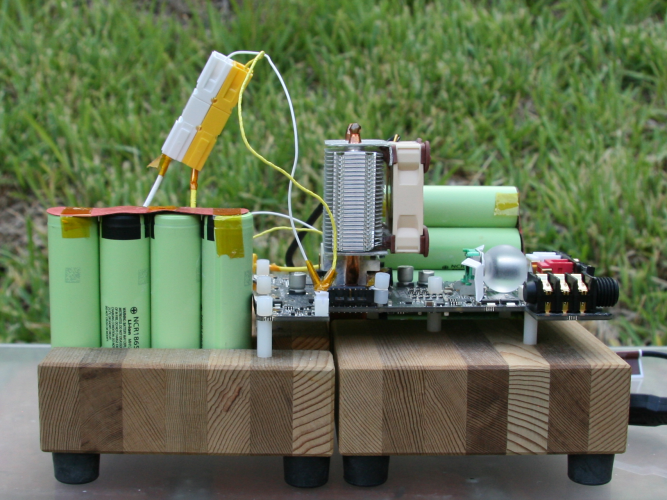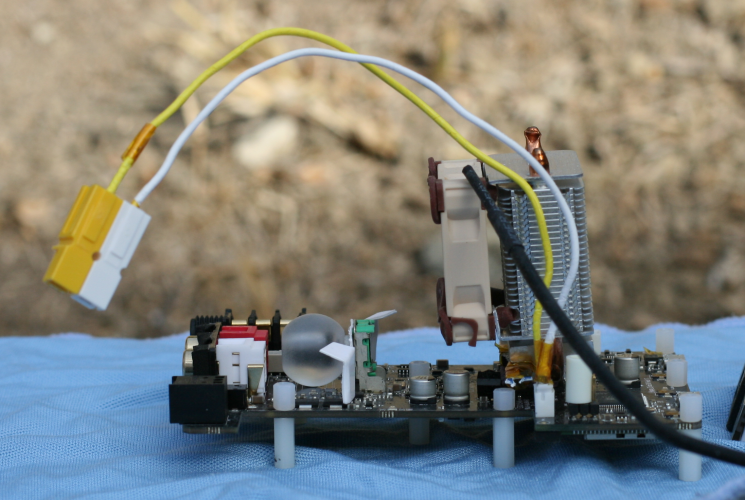I did my testings too with different players and many USB to Spdif coax and toslink DDC's.
I believe theres nothing wrong with USB as a format but aside possible noise that can creep over copper connections, theres also the, for the WTA algorytm very important, issue of data integrity. Few investigated this. We assume that we're pushing bit perfect data into the Scaler or DAC but i have my doubts about many sources conversions.
Although Rob surely holds on to the Amanero USB chip implementation being bitperfect, i do believe the FPGA side of this chip is correct, but i think the USB side of the Amanero and specially the player's software driver for it is deviating from bitperfect data throughput.
After many tests and assuring myself the player program is not altering any part of the music file with DSP and digital volume attenuation i found clear differences in sound clarity between DDC's, Chord's Amanero chip (read DDC) included.
USB input on Mscaler or DAC was not the clearest sounding of my comparison, so were other brand DDC's. They had a slight veil or muddyness over the sound. Like the WTA gives out the wrong accumulated data. And i know a bunch of people that sold their scalers for it.
Only a few DDC's gave breathing air in the sound like a curtain is removed between me and the music, most DDC's happened to use Xmos USB-toslink chips. But only the Xmos DDC's using a Xmos generic software driver sounded right.
I tried the Topping D10 with Xmos as DDC which only acceps the Topping made driver but also this sounded muddy compared.
Offcourse the differences were mostly heard with the better music files. With poorly digital (re)mastered music it was not noticable as the transient information of those records is already wasted.
Another curious thing i noticed is that on my ipad connected to Chord's Amanero USB fixates the volume at assuming max, while with the Xmos and some others it seem to push volume information. On those i can manually set the volume to 100% so no altering of the data. Setting the volume anything but 100% gave the same veil as the Chord USB and the 'muddy' DDC's with fixed volume.
I think you have to look to eradicate RFI along the entire digital chain up to the DAC.
In my case working backwards from the TT2 I use:
Wave Storm Ref dual BNC between TT2 & M Scaler
Sean Jacobs Capbox between M Scaler and supplied SMPS plugged into a different main ring to the TT2 with Chord Co Power Aray on TT2 and another on the rest of the rig
Network Acoustics Muon2 USB between M Scaler and Innous Pulsar which uses the Phoenix Lite USB reclocker
Reiki Audio JundoStream Ethernet between Pulsar and Reiki Audio SuperSwitch using iFi Elite SMPS and Sean Jacobs Capbox
Innuos Zen III (used as bridged NAS on the rack) connected to the SuperSwitch via Melco C100 Ethernet
Second Reiki Audio SuperSwitch connected via Melco C100 to the Innuos Zen with switch using iFi Elite SMPS and Sean Jacobs Capbox
The Ethernet line from Router is a dedicated line (standard Cat 5e) into the second SuperSwitch, nothing else connects to this line.
My router is powered by an iFi Power X
Note JundoStream and C100 are only grounded at the send end.
Some will say this is over the top, others will say I should replace the two Chord and two iFi SMPS with LPS but the sound is sublime.
Everything was individually meaningful but the biggest impacts were JundoStream (extraordinary), SuperSwitch 1 and plugging the M Scaler into a different mains ring.





















